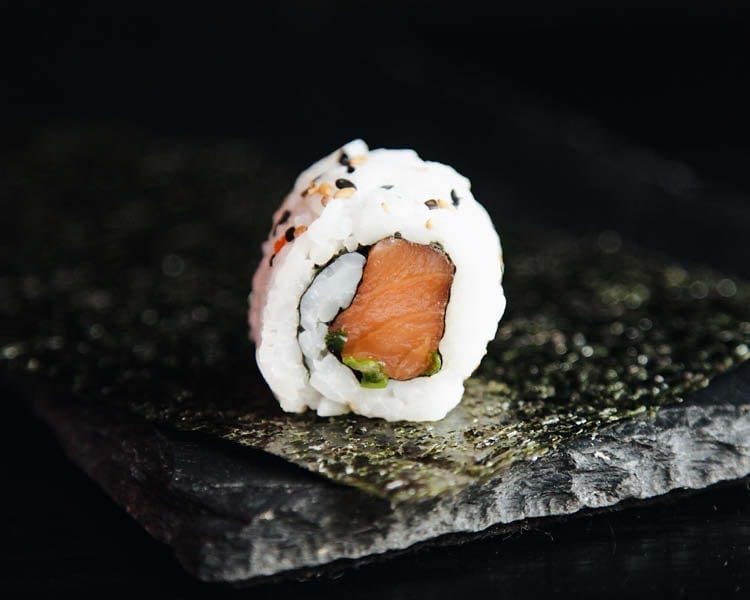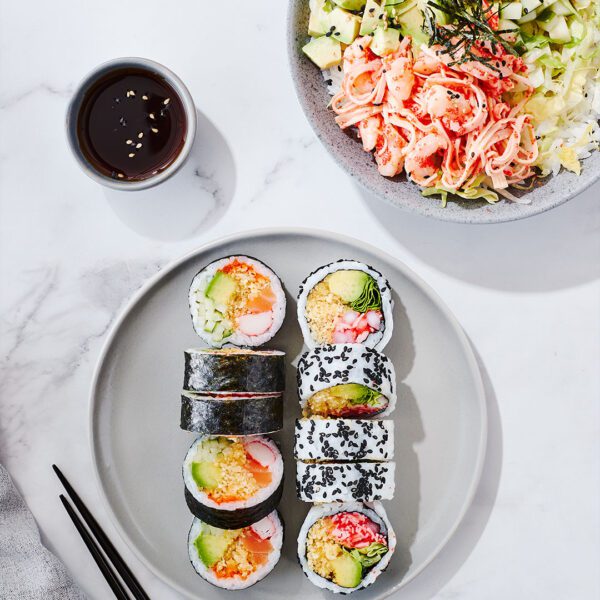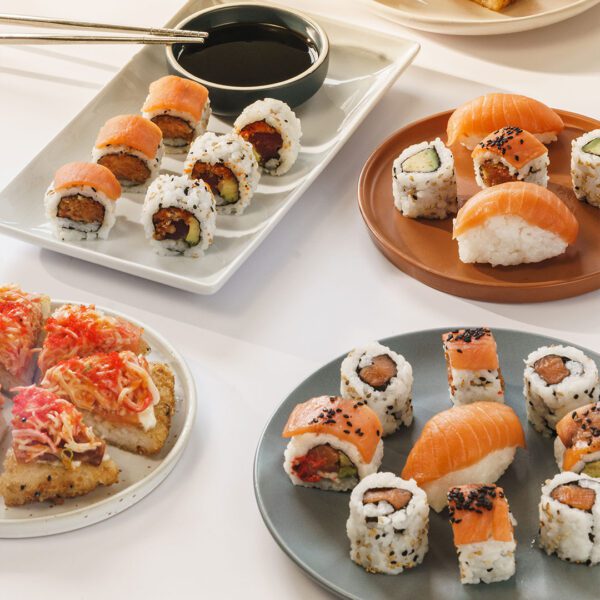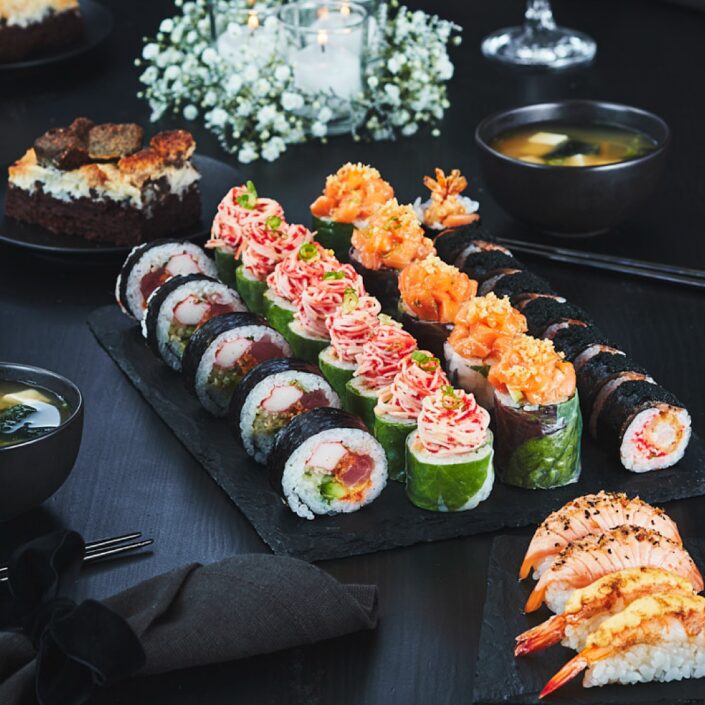Japanese dishes, more specifically sushi, have become essentials in our eating habits over the years, from evenings to meals at the office. They accompany us in every corner of our life for the most careful nutritional intake. After all, it only takes a handful of ingredients, to allow combinations of flavours, textures and tastes, to stimulate your taste buds! This contribution, seen as the most popular of Japan, to international gastronomy, may surprise you. Sushi has more than one trick up its sleeve and that’s why we have listed 5 interesting facts about their nutritional benefits!
1. Nutrients for the brain and heart
According to some nutritionists and a July 31, 2019 article titled “Pourquoi nous devons réapprendre à manger gras” [Why We Must Return to Eating Fat]“ 1, avocado and fish seem to be excellent foods for the brain and heart.
Of course, avocados are rich in vitamin B9 and monounsaturated fatty acids. However, they are also high in fibre, essential for the proper functioning of the brain and heart. According to the Futura Sciences, 2 consuming one avocado per day improves cardiovascular risk factors!
Fish, especially fatty fish such as salmon, mackerel and herring, are an excellent source of omega 3 fatty acids essential for healthy brain function. For several years, scientific studies have demonstrated the benefits of these lipids. 3 These mainly contain fatty acids such as docosahexaenoic acid (DHA) and eicosapentaenoic acid (EPA), helping to keep the mind focused and supplied with ample enough energy.
So, do we dare to indulge ourselves by ordering the Salmon Lover combo for an iron brain and heart health?

2. Seaweed is much more rich than expected
According to nutritionist Nathalie Majcher 4, seaweed commonly found in makis or temaki (also called “nori”) are low in calories but above all, they are very rich in protein! Indeed, it is thanks to their high levels of minerals such as iodine, magnesium, calcium, iron, antioxidants, and even fibre (8%), that make seaweed an excellent source of nutrients.
With that being said, let’s order Black Mamba for dinner!
3. What about wasabi?
Most are familiar with wasabi. You may have tasted it at one of our locations or from the comfort of your home. Because this vibrant green paste is easily evident to the sense of smell, we often compare it to mustard or horseradish. Presented in tube or powder, this plant, in the medical context, is, according to InfoSanté, 5 extremely effective against many respiratory diseases and certain cancers. It even is used to thin the blood or fight against the bacteria responsible for cavities. It is unfortunately difficult to cultivate this plant which is thus why it is extremely expensive. To keep up with global demand, the wasabi that is generally served to us is therefore not quite what we think it is. It consists of horseradish, mustard and green food colouring.
4. Ginger, not just an additional flavour
According to Japanese tradition, and also Lesley Chesterman, food critic 6, slices of ginger, called “gari” in Japanese, normally allows you to “clean” your mouth in between different kinds of sushi. This ensures to not mix the tastes of the different varieties of fish, present in the sushi and to sublimate each flavour and facilitate digestion.
5. Sesame and its medicinal properties
Sesame is one of the oldest foods, which was originally used for its medicinal properties.7 Whether it was 7,500 years ago in India or 5,000 years ago in China, these sesame seeds, packed with antioxidants, vitamins, minerals, essential fatty acids and fibre, were already at that time THE health food par excellence.
Present in most sushi, sesame will give you all the benefits you need to maintain good health. With our Hosomakis, you will be spoiled by choice at Sushi-Shop!
Call on the know-how of Sushi Shop and prepare your order online now, or visit us in-store!






